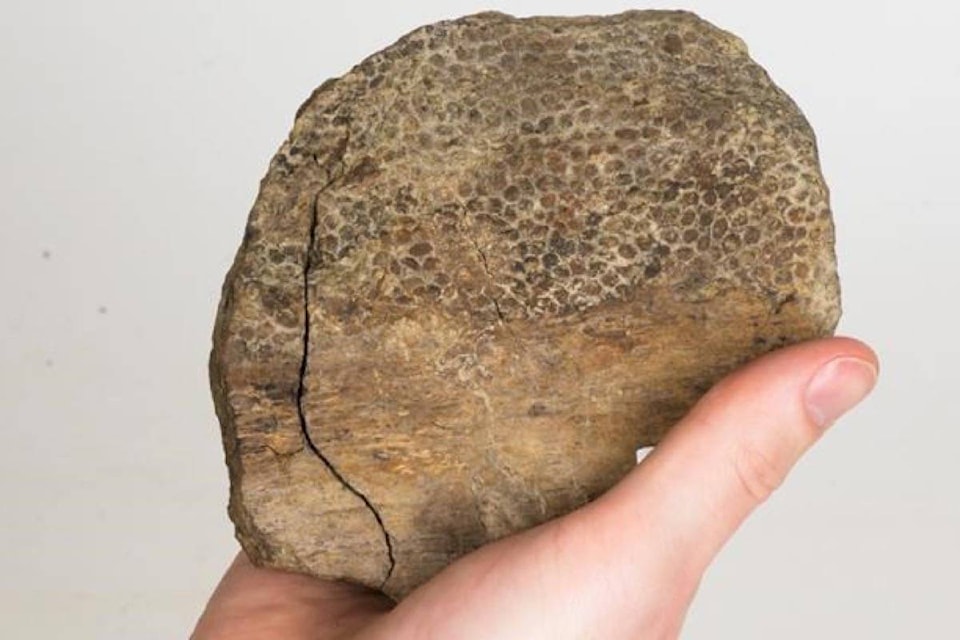Research suggests Tyrannosaurus rex and some of its close relatives were covered in tiny scales and not feathers as many scientists previously thought.
An international team of researchers, including University of Alberta paleontologists, studied fossilized skin from massive carnivorous lizards known as tyrannosaurids.
Their ancestors, which were about the size of wolves or leopards, were coated in feathery fuzz, but somewhere along the way their descendants seem to have lost that attribute, said paleontologist Scott Persons, who contributed to the study.
ŌĆ£What we see here is actually evidence of feathers evolving and then being lost ŌĆō or at least greatly reduced in terms of their number ŌĆō in this one lineage of dinosaurs, which is strange,ŌĆØ he said.
A completely separate branch of the dinosaur family tree included an uninterrupted line of feathered carnivores, including the Velociraptor, that are related to todayŌĆÖs birds.
PersonsŌĆÖ interest was piqued when his U of A colleague and mentor, renowned paleontologist Philip Currie, showed him a skin sample from a specimen found in Alberta.
A team of U of A researchers got to work, but soon got wind of another group studying a different skin fossil.
ŌĆ£Rather than competing with each other in a rush to see who could be the first to publish on it, we all pooled our resources and, as a result, we have a really cool study that talks about skin in multiple species of tyrannosaurids, which is pretty gosh darn cool.ŌĆØ
The combined team included researchers from Canada, the United States and Australia.
ItŌĆÖs rare to find fossilized dinosaur skin, but advances in preparation techniques are making discoveries more common. Often, a researcher wonŌĆÖt even know there is skin attached to a fossil until after itŌĆÖs taken back to the lab.
The scientists canŌĆÖt say for certain why feathers went by the wayside in tyrannosaurids, but Persons said he suspects it has to do with the animalsŌĆÖ size, as the bigger you are, the harder it is to stay cool.
He notes elephants and rhinos today have little in the way of hair.
ŌĆ£YouŌĆÖre better off not being out in the savannah in the hot sun while wearing a down jacket.ŌĆØ
Because the skin specimens were relatively small, itŌĆÖs impossible to say whether the dinosaurs were entirely featherless, or if they had isolated patches on their bodies, such as a crest atop their heads.
To know for sure, Persons said paleontologists would need to find a tyrannosaurid that had been completely mummified.
ŌĆ£TheyŌĆÖre probably buried somewhere out there and itŌĆÖs really just a matter of time before we get lucky enough and uncover one.ŌĆØ
The Canadian Press



